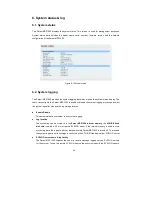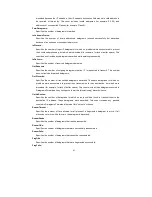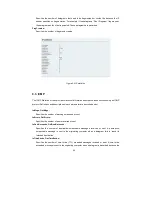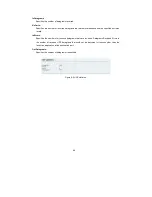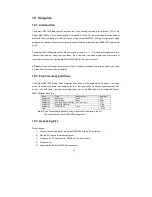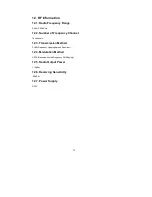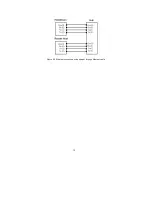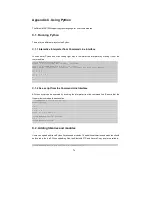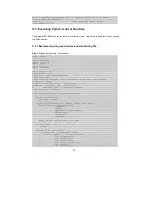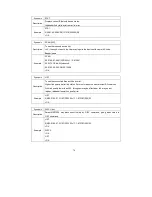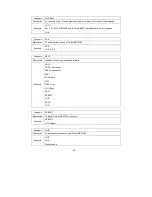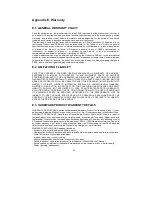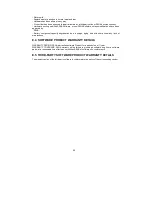
67
10. CLI guide
10.1. Introduction
The Parani-MSP1000
Root
user can access the Linux console command line interface (CLI) of the
Parani-MSP1000 by via the serial console or Telnet/SSH. In the CLI, the authorized user can perform
standard Linux commands to view the status of the Parani-MSP1000, edit the configuration, apply
configuration changes, define user scripts and transmit files between the Parani-MSP1000 and remote
hosts.
The Parani-MSP1000 provides 2048 KB user space mounted in
/usr2
for read/write capabilities in its
internal flash memory. Using the user space, the users user can make create their own scripts or
executable binaries to customize the Parani-MSP1000 for their own purpose.
A
Root
users can will always have access to the CLI always by through the serial console or by using
a Telnet/ SSH client from their workstation.
10.2. Flash memory partitions
The Parani-MSP1000 internal flash is partitioned as shown in the table below. The users can freely
access the Mtdblock4 which is mounted on /usr2 for their own needs. The users can also access files
at /etc, /var, and /temp. However, accessing these files at the RAM disk will not affect the Parani-
MSP1000 after rebooting.
Bloc k
Type
Mount point
Size (KB)
Mtdblock0
Bootloader
None
384
Mtdblock1
Linux Kernel
None
2048
Mtdblock2
Ram disk image (16MB)
/etc, /var, /tm p
256
Mtdblock3
Cramfs (Read only)
/
11648
Mtdblock4
JFFS2 (R/W)
/usr2
2048
Total
16348
Note:
Do not access each mtdblock using mount or dd command in the CLI.
This may make the Parani-MSP1000 inoperable.
10.3. Accessing CLI
Serial console:
1)
Connect the console port of the Parani-MSP1000 with the PC serial port
2)
Run the PC terminal emulation program
3)
Configure the PC serial port to: 9600-8- N-1 No flow control
4)
Press <enter>
5)
Login with the Parani- MSP1000 root account






